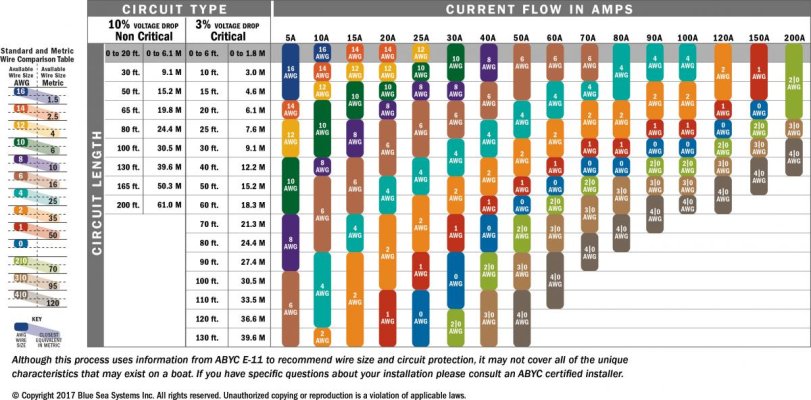I am planning a 2-200w solar panel setup on a mainship 390. Nominal boat systems are 12v throughout. 2 - 8D FLA batteries for now. Victron mppt controller to charge bat 1 with yandina charge combiner (100a) to batt 2. No inverter or additional batteries of any type right now. Boat will live on a mooring.
The question is, do I use two 24v panels in series (90.8v <voc> @ 5.83a <isc>) to achieve the lowest voltage drop? Panels on flybridge aft rail, probably 30-35ft wire run to mppt. **MIGHT** add a third panel someday....so like 135voc total at that point.
OR
Run two (possibly 3 later) 12v panels in series (48.6v voc and 10.2a isc)
OR
Run 2 (possibly 3 later) 24v panels in PARALLEL (45.4voc and 17.49a isc)
The first option has lowest voltage drop (12ga) PV to mppt (under 1%). Third option has the most voltage drop PV to mppt - closer to 3%.
Should I be concerned about voltage drop or high voltage?
What happens to charge output if the mppt sees like 3% voltage drop as input/pv voltage?
--Kevin
The question is, do I use two 24v panels in series (90.8v <voc> @ 5.83a <isc>) to achieve the lowest voltage drop? Panels on flybridge aft rail, probably 30-35ft wire run to mppt. **MIGHT** add a third panel someday....so like 135voc total at that point.
OR
Run two (possibly 3 later) 12v panels in series (48.6v voc and 10.2a isc)
OR
Run 2 (possibly 3 later) 24v panels in PARALLEL (45.4voc and 17.49a isc)
The first option has lowest voltage drop (12ga) PV to mppt (under 1%). Third option has the most voltage drop PV to mppt - closer to 3%.
Should I be concerned about voltage drop or high voltage?
What happens to charge output if the mppt sees like 3% voltage drop as input/pv voltage?
--Kevin

